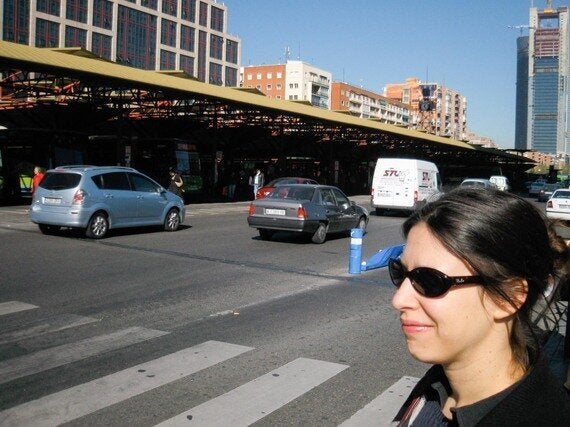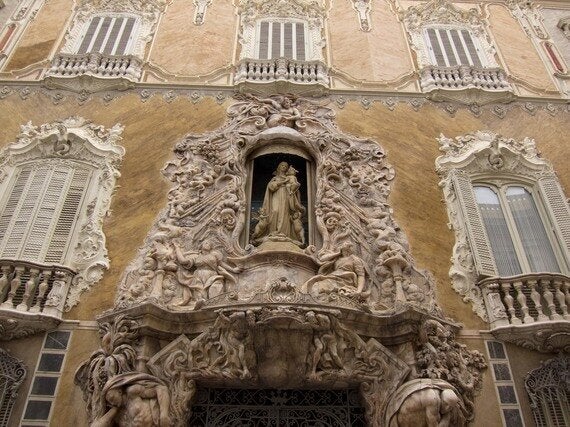
Photograph by Kevin Koekkoek
Take a moment to study the above photograph. Now, what do you see? Spotter's badge if you reply Plaza de Castilla, the northern Madrid square which dominates the Chamartín business district.
But what do you think of the woman in the photograph? Just who is she? A.) Local feeling self-conscious under the glare of a lens? B.) Or tourist posing awkwardly for a holiday snap?
Read The A-Z of Spanish Culture to find out. For me, the author (for it's Pilar Orti in the photo) is both A and B. The Spanish-born but British(-school) educated Orti views her homeland through a prism of childhood memories and following Spain's fortunes from her now London base.
The most black and white of countries, in Spain you're either Real Madrid or Barça; left or right wing. But despite this being Pilar's A-Z of Spain, she comes across as fairly objective and paints a portrait of Spain which is neither tinted red or blue. Although, in doing so, you could say she lets some big fish wriggle off the hook including the recently abdicated king.

Photograph by Kevin Koekkoek
Pilar's recollections of the failed coup in 1981 are interesting, to say the least. As British kids hid behind the sofa watching Dr Who, Spanish ones were spooked by the army firing live ammunition in the Spanish parliament. Thankfully, Spain's shaky democracy held out.
There's a very colourful section on the art of Spanish swearing. The Spaniards seem to be particularly creative when it comes to profanity. Which other nation would have the (warped) genius to come up with "me cago en la leche(I shit in the milk)"?

Photograph by Kevin Koekkoek
Elsewhere, Orti informs the reader about Spanish drinking mores. Spaniards like to socialize in big groups. So the author explains the concept of the big bottle in a chapter titled "B is for Botellón" and sub-titled "Drinking habits and life in the Barrios."
A supple Orti, though, extends herself to cover high as well as low culture. With a background in theatre, she offers a thorough overview of Spain's most highly-regarded playwright, Lorca. If you'd been putting off reading Blood Wedding, Orti's enthusiasm for her countryman will have you ordering it as soon as you finish this A-Z.

Photograph by Kevin Koekkoek
There's more highbrow stuff in "G is for Goya". Here, Orti combines an art-historian's knowledge (if she's bluffing, I'd hate to play her at poker) with a common touch. Think Spanish Art for Dummies.
Considering myself to be a reasonably well-read connoisseur of Spanish literature, I looked forward to "Q is for Quixote: Great classic writers." With good reason, as it turned out. Yet I discovered that I didn't know quite as much about Spain's literary world as I thought with Orti introducing me to some authors I'd never heard of.
I was back on more familiar territory by the time I reached "T is for Tapas" Although Orti grew up in Madrid, it was heartening to see she referred to regional specialites. Including one I'm used to sampling over in the Canary Islands, namely papas arrugadas con mojo (new potatoes boiled and salted to the point of wrinkling accompanied by a spicy sauce).
The joy of The A-Z of Spanish Culture is that you can dip in and out of it. It's a reference book that's dry in wit but far from dusty. And one that's likely to be as well-thumbed as your trusty copy of the A-Z of London.
For the purposes of writing this review, I received a free copy of The A-Z of Spanish Culture.